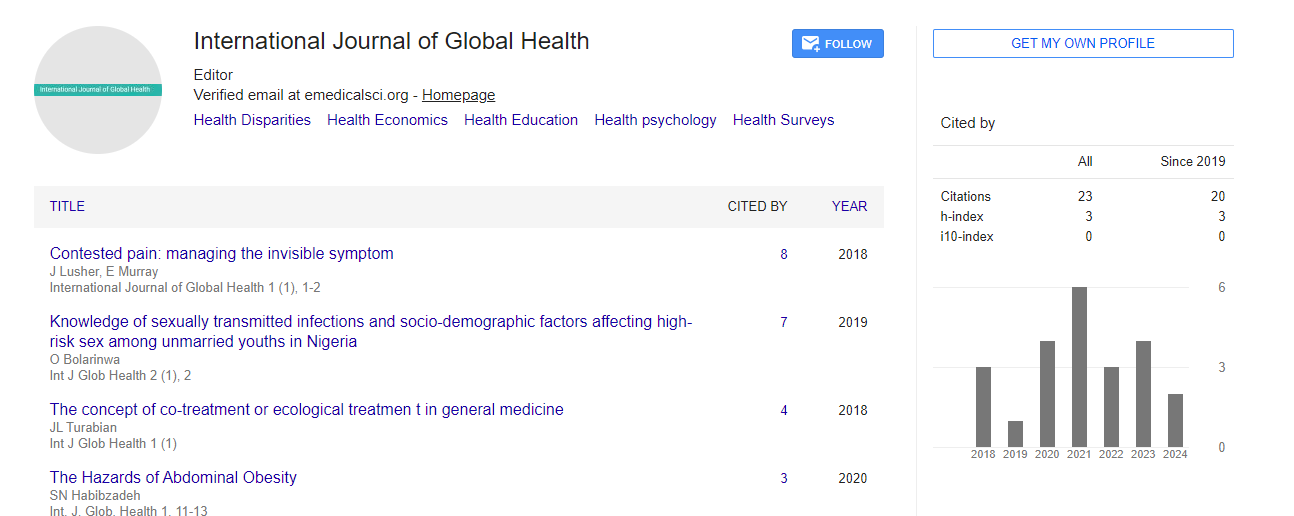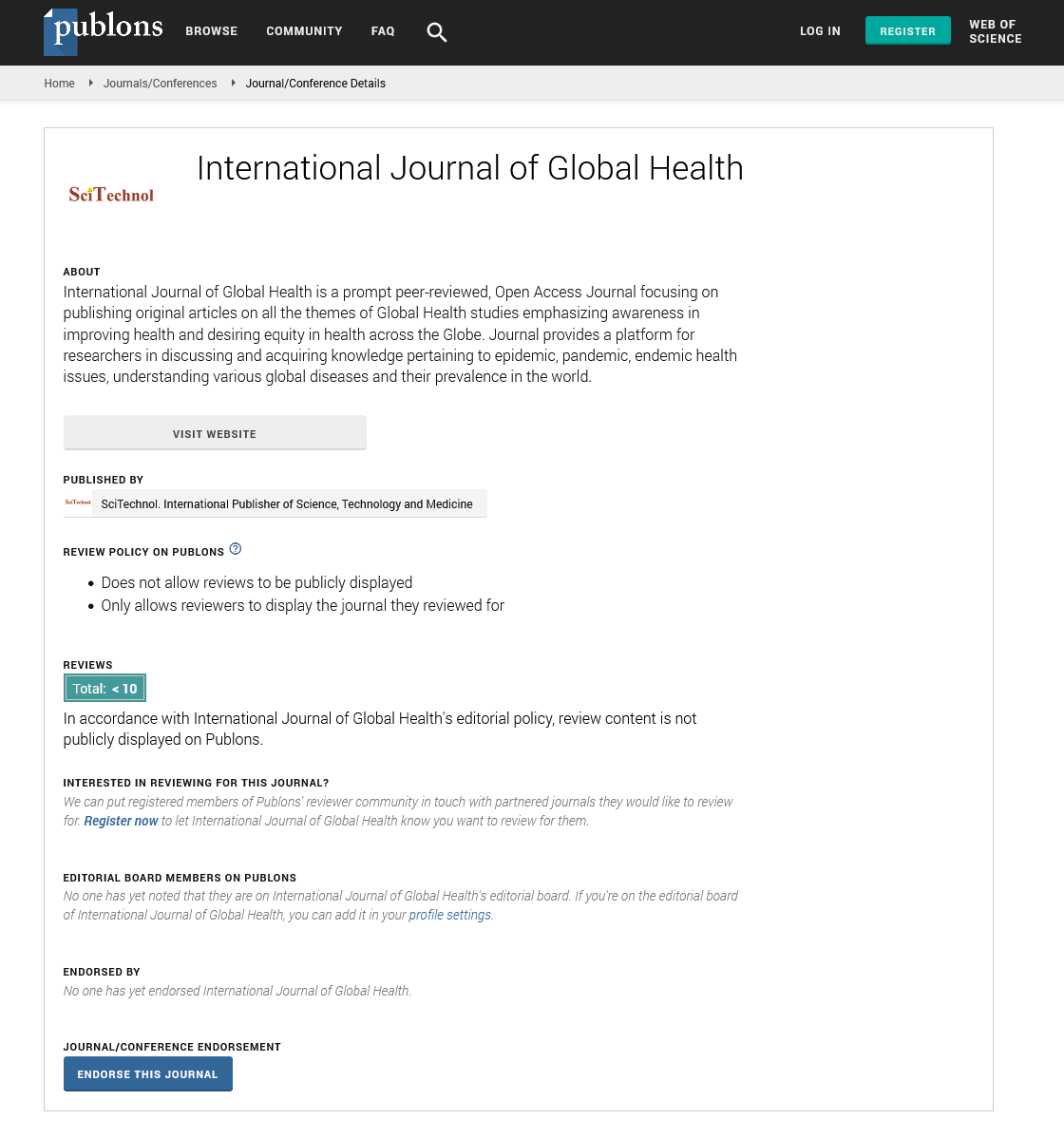Commentary, Int J Glob Health Vol: 5 Issue: 3
Impact of COVID-19 in India and the Global Economy
Jasintha Mtengezo*
Department of Critical Care Nurse, Addis Ababa Medical University College, Hargeysa, Somalia
*Corresponding Author: Jasintha Mtengezo
Department of Critical Care Nurse, Addis Ababa Medical University College, Hargeysa, Somalia
E-mail: negewo_m@gmail.com
Received date: 15 April, 2022, Manuscript No. IJGH-22-57362;
Editor assigned date: 18 April, 2022, PreQC No. IJGH-22-57362 (PQ);
Reviewed date: 29 April, 2022, QC No. IJGH-22-57362;
Revised date: 09 May, 2022, Manuscript No. IJGH-22-57362 (R);
Published date: 19 May, 2022, DOI: 10.4172/Ijgh.1000163
Citation: Mtengezo J (2022) Impact of COVID-19 in India and the Global Economy. Int J Glob Health 5:3.
Keywords: Covid-19 Global Economy
Description
As per the official government guidelines, India is making preparations against the COVID-19 outbreak, and avoiding specific crisis actions or not understating its importance will have extremely severe implications. All the neighboring countries of India have reported positive COVID-19 cases. To protect against the deadly virus, the Indian government have taken necessary and strict measures, including establishing health check posts between the national borders to test whether people entering the country have the virus. Different countries have introduced rescue efforts and surveillance measures for citizens wishing to return from China. The lesson learned from the SARS outbreak was first that the lack of clarity and information about SARS weakened China's global standing and hampered its economic growth. The outbreak of SARS in China was catastrophic and has led to changes in health care and medical systems. Compared with China, the ability of India to counter a pandemic seems to be much lower. A recent study reported that affected family members had not visit the Wuhan market in China, suggesting that SARS-CoV-2 may spread without manifesting symptoms. Researchers believe that this phenomenon is normal for many viruses. India, with a population of more than 1.34 billion-the second largest population in the world-will have difficulty treating severe COVID-19 cases because the country has only 49,000 ventilators, which is a minimal amount. If the number of COVID-19 cases increases in the nation, it would be a catastrophe for India. It would be difficult to identify sources of infection and those who come in contact with them. This would necessitate multiple strategies to handle the outbreak, including computational modeling as well as statistical and quantitative analyses, to rapidly develop new vaccines and drug treatments. With such a vast population, India's medical system is grossly inadequate. A study has shown that, owing to inadequate medical care systems, nearly 1 million people die every year in India. India is also engaged in trading with its nearby countries, such as Bangladesh, Bhutan, Pakistan, Myanmar, China, and Nepal. During the financial year 2017–18 (FY2017-18), Indian regional trade amounted to nearly $12 billion, accounting for only 1.56% of its total global trade value of $769 billion. The outbreak of such viruses and their transmission would significantly affect the Indian economy. The outbreak in China could profoundly affect the Indian economy, especially in the sectors of electronics, pharmaceuticals, and logistics operations, as trade ports with China are currently closed. This was further supported by the statement by Suyash Choudhary, Head-Fixed Income, IDFC AMC, stating that GDP might decrease owing to COVID-19.
Global Economy
Economists assume that the impact of COVID-19 on the economy will be high and negative when compared with the SARS impact during 2003. For instance, it has been estimated that the number of tourists arriving in China was much higher than that of tourists who travelled during the season when SARS emerged in 2003. This shows that COVID-19 has an effect on the tourism industry. It has been estimated that, for SARS, there was a 57 and 45% decline in yearly rail passenger and road passenger traffic, respectively. Moreover, when compared with the world economy 15 years ago, world economies are currently much more inter-related. It has been estimated that COVID-19 will hurt emerging market currencies and also impact oil prices. From the retail industry's perspective, consumer savings seem to be high. This might have an adverse effect on consumption rates, as all supply chains are likely to be affected, which in turn would have its impact on supply when compared with the demand of various necessary product items. This clearly proves that, based on the estimated losses due to the effect of SARS on tourism (retail sales lost around USD 12–18 billion and USD 30–100 billion was lost at a global macroeconomic level), we cannot estimate the impact of COVID-19 at this point. This will be possible only when the spread of COVID-19 is fully controlled. Until that time, any estimates will be rather ambiguous and imprecise. The OECD Interim economic assessment has provided briefing reports highlighting the role of China in the global supply chain and commodity markets. Japan, South Korea, and Australia are the countries that are most susceptible to adverse effects, as they have close ties with China. It has been estimated that there has been a 20% decline in car sales, which was 10% of the monthly decline in China during January 2020. This shows that even industrial production has been affected by COVID-19. So far, several factors have thus been identified as having a major economic impact: labor mobility, lack of working hours, interruptions in the global supply chain, less consumption, and tourism, and less demand in the commodity market at a global level, which in turn need to be adequately analyzed by industry type. Corporate leaders need to prioritize the supply chain and product line economy trends via demand from the consumer end. Amidst several debates on sustainable economy before the COVID-19 impact, it has now been estimated that India's GDP by the International Monetary Fund has been cut down to 1.9% from 5.8% for the FY21. The financial crisis that has emerged owing to the worldwide lockdown reflects its adverse effect on several industries and the global supply chain, which has resulted in the GDP dropping to 4.2% for FY20, which was previously estimated at 4.8%. Nevertheless, it has been roughly estimated that India and China will be experiencing considerable positive growth among other major economies.
 Spanish
Spanish  Chinese
Chinese  Russian
Russian  German
German  French
French  Japanese
Japanese  Portuguese
Portuguese  Hindi
Hindi 
